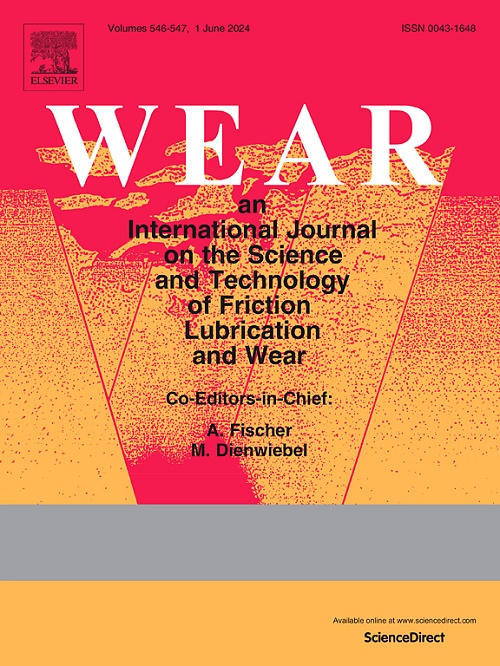Effects of torque adjustment rates and increments on wheel-rail adhesion instability behavior under various speed and axle load conditions
IF 5.3
1区 工程技术
Q1 ENGINEERING, MECHANICAL
引用次数: 0
Abstract
During the locomotive traction process, if the tangential force exceeds the maximum adhesion force of the wheel-rail interface, wheel-rail adhesion instability occurs, leading to accelerated damage to the contact surface due to severe wear. Therefore, it is important to study the dynamic behavior of wheel-rail adhesion instability to improve the safety and stability of the train operations. A novel wheel-rail rolling contact experiment machine based on torque control was designed and established to investigate the wheel-rail adhesion instability behavior. The results show that: As the torque of the loading motor increased, the slip ratio initially increased steadily, then rapidly rose and fluctuated. With the decrease in torque adjustment rate, the fluctuation of the slip ratio decreased. Meanwhile, the torque increments had an impact on adhesion instability behavior. When the torque increment was less than 0.6 Nm, with the increase in torque increment, the slip ratio initially increased and then decreased, while the wheel-rail adhesion coefficient increased. However, when the torque increment exceeded 0.6 Nm, as the torque increment increased, the maximum slip ratio remained constant, while the adhesion coefficient decreased, leading to the slippage of the wheel-rail roller. In addition, with the axle loads and rotational speeds increased, the maximum slip ratio and adhesion coefficient decreased. Also, the function relationship between the slip ratio and the torque increment after the critical point (adhesion force saturation point) was proposed, which can provide guidance for vehicles to adjust the adhesion coefficient.
在不同速度和轴载条件下,转矩调节速率和增量对轮轨黏附不稳定行为的影响
在机车牵引过程中,如果切向力超过轮轨界面的最大附着力,就会发生轮轨附着失稳,导致接触面因严重磨损而加速损坏。因此,研究轮轨黏附失稳的动力特性对提高列车运行的安全性和稳定性具有重要意义。设计并建立了一种基于转矩控制的轮轨滚动接触实验装置,用于研究轮轨黏附失稳行为。结果表明:随着加载电机转矩的增大,滑移率先稳定增大,然后迅速上升并波动;随着转矩调节速率的减小,滑移比的波动减小。同时,扭矩增量对黏附失稳行为也有影响。当转矩增量小于0.6 Nm时,随着转矩增量的增大,滑移率先增大后减小,轮轨附着系数增大。而当转矩增量大于0.6 Nm时,随着转矩增量的增大,最大滑移比保持不变,而附着系数减小,导致轮轨滚轮发生滑移。此外,随着轴载和转速的增加,最大滑移比和附着系数减小。提出了滑移比与黏附力饱和点后扭矩增量的函数关系,可为车辆调整黏附系数提供指导。
本文章由计算机程序翻译,如有差异,请以英文原文为准。
求助全文
约1分钟内获得全文
求助全文
来源期刊

Wear
工程技术-材料科学:综合
CiteScore
8.80
自引率
8.00%
发文量
280
审稿时长
47 days
期刊介绍:
Wear journal is dedicated to the advancement of basic and applied knowledge concerning the nature of wear of materials. Broadly, topics of interest range from development of fundamental understanding of the mechanisms of wear to innovative solutions to practical engineering problems. Authors of experimental studies are expected to comment on the repeatability of the data, and whenever possible, conduct multiple measurements under similar testing conditions. Further, Wear embraces the highest standards of professional ethics, and the detection of matching content, either in written or graphical form, from other publications by the current authors or by others, may result in rejection.
 求助内容:
求助内容: 应助结果提醒方式:
应助结果提醒方式:


